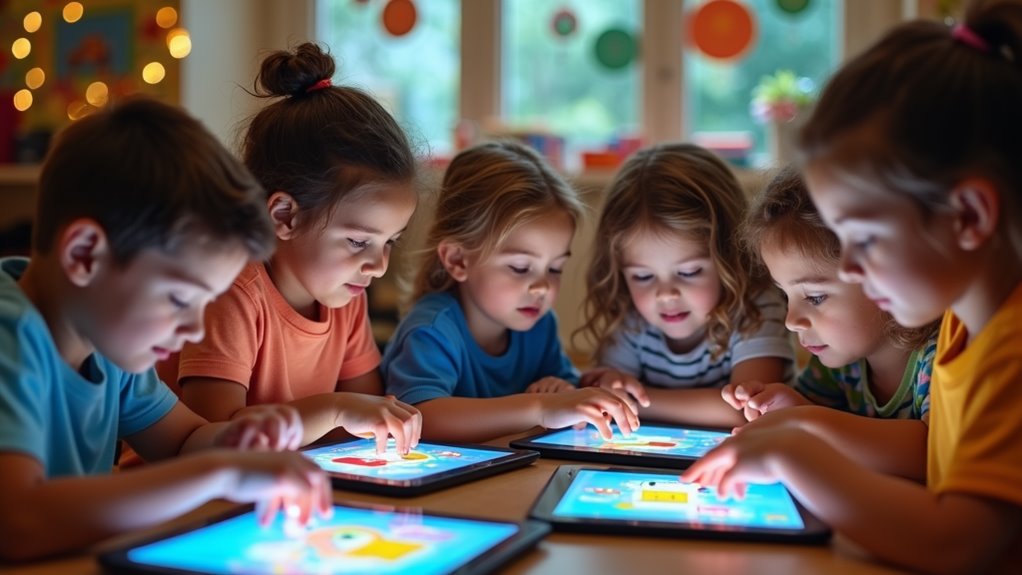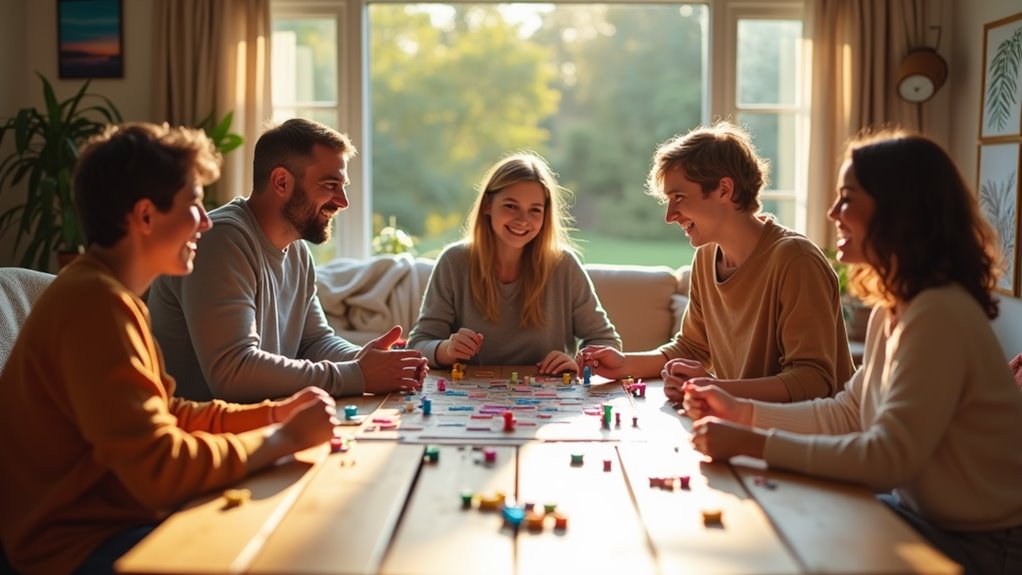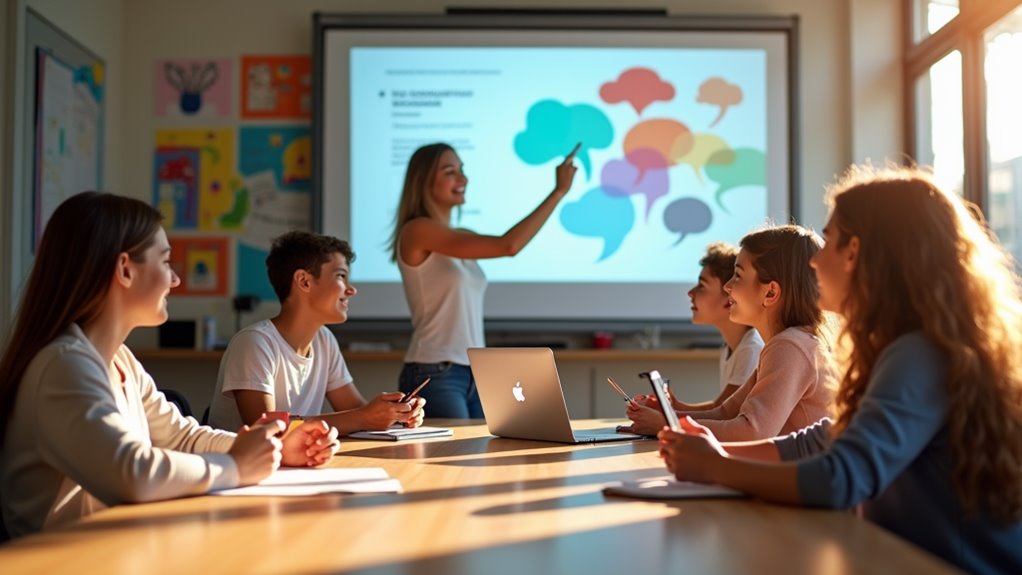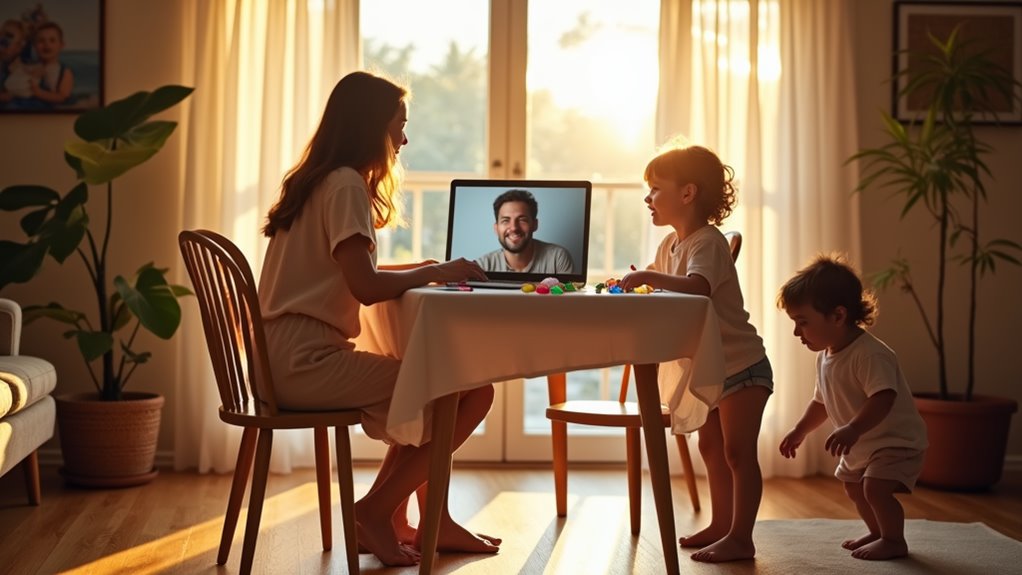Gamification in learning apps for kids makes education feel like an epic quest! Imagine turning math problems into magical adventures, or history lessons into treasure hunts. These apps use cool features like badges, points, and levels to keep you motivated and engaged. You get instant feedback, too, so you know how you're doing along the way. Plus, with friendly competition and social interactions, learning becomes a fun group activity. Apps like "Kahoot!" and "Duolingo" show just how exciting learning can be! Stick around, and you'll discover even more ways gamification is changing education for the better!
Understanding Gamification
Gamification in learning apps for kids combines elements of play and education to create engaging experiences. You might wonder what gamification really means. Well, it's all about turning learning into a game! Imagine earning points for completing tasks or opening levels as you master new skills. It's like playing your favorite video game, but instead of battling enemies, you're battling math problems or spelling challenges.
When apps include rewards, challenges, and fun visuals, they make learning feel less like schoolwork and more like an adventure. You get to collect badges, climb leaderboards, and even compete with friends. This adds excitement and motivation to your learning journey. Plus, it helps you stay focused longer because you're having fun!
Gamification also encourages you to take risks in your learning. You might try new things without the fear of failing since it's all part of the game. And let's be honest—who doesn't love a little friendly competition?
Benefits of Gamification in Education
One of the biggest advantages of using gamification in education is that it boosts student engagement. When learning feels like a game, you're more likely to immerse yourself and enjoy it. You'll find yourself wanting to complete challenges and earn rewards instead of just sitting in class, yawning. Isn't that a win?
Another fantastic benefit is that gamification encourages friendly competition. You can compete with your classmates, and that little spark can make learning way more exciting. It's like playing a sport; it pushes you to do better and learn more.
Plus, those leaderboards and badges? They give you something to work toward, making it feel rewarding.
Gamification also helps you remember things better. When you're having fun, your brain is more open to new ideas, and you're likely to recall information later. You'll be surprised at how much you can learn while having a blast!
Key Game Mechanics for Engagement
To keep that excitement alive in educational apps, certain game mechanics play a key role in driving engagement.
First off, think about rewards. Kids love earning badges or points for completing tasks. It's like collecting stickers, but way cooler! These rewards motivate them to keep going, pushing through challenges.
Next, let's talk about levels. When you break down learning into levels, it creates a sense of achievement. Kids can progress from easy to harder tasks, and that feeling of leveling up is just like in their favorite video games. Plus, who doesn't love a good challenge?
Another important mechanic is feedback. Instant feedback helps kids understand what they did well and where they can improve. It's like having a coach cheering you on, guiding you to do even better!
Lastly, social interaction can't be overlooked. Allowing kids to compete or collaborate with friends creates a sense of community. They can share their achievements, compare scores, and even team up for challenges.
This way, learning becomes a fun group activity, not just a solo mission. So, these game mechanics really make educational apps more engaging and exciting!
Successful Examples of Learning Apps
Several successful learning apps have effectively harnessed game mechanics to create engaging experiences for kids. One great example is "Kahoot!". You get to compete with friends or classmates in fun quizzes, and the excitement of racing against each other really adds to the learning. Plus, who doesn't love a little friendly competition?
Another popular app is "Prodigy Math," where you set off on magical quests while solving math problems. It's like being in a video game but with math! The more you play, the more rewards you earn, which keeps you motivated to keep learning.
Then there's "Duolingo," a language app that turns learning into a game. You earn points, level up, and even get cute little badges for your progress. It makes picking up a new language feel like an adventure.
Lastly, "Minecraft: Education Edition" lets kids explore and create in a virtual world while learning subjects like math and history.
With all these fun examples, it's clear that gamification transforms learning into an exciting journey, making education feel less like a chore and more like a thrilling game!
Strategies for Effective Implementation
Effective implementation of gamification in learning apps requires careful planning and execution. First, you'll want to identify clear learning objectives. What do you want kids to learn? Once you know that, you can design game elements that align with those goals. For example, if you're teaching math, use points and badges to reward correct answers. Kids love collecting rewards, almost as much as they love collecting stickers!
Next, keep the user experience in mind. Make sure the app is fun and engaging but not overwhelming. Balance challenges with achievable tasks so kids don't get frustrated. You want them to feel like heroes, not lost in a labyrinth!
Also, involve your target audience in the design process. Asking kids what they like can lead to great ideas. Plus, they'll feel more invested in the app.
Finally, don't forget to gather feedback after launch. Listening to users helps you fine-tune the experience. Remember, gamification is all about making learning enjoyable, so keep it playful and interactive!
With these strategies, you can create a learning app that kids will love, and who knows—you might even learn something while designing it!
Future Trends in Educational Gamification
As technology continues to evolve, the future of educational gamification promises even more dynamic and engaging experiences for kids. Imagine learning math while battling aliens or mastering spelling through a treasure hunt! Developers are working hard to blend education with fun, making it feel like a game rather than a chore.
One trend you might see is the use of augmented reality (AR). With AR, your living room could turn into a jungle where you solve puzzles to learn about animals. How cool is that?
Another exciting idea is personalized learning paths. This means that instead of one-size-fits-all lessons, you'll get challenges tailored just for you, keeping you motivated and excited.
Don't forget about social interaction! Future apps might let you team up with friends, encouraging collaboration while learning together. Plus, there's a good chance we'll see more rewards, like virtual badges or fun avatars, making achievements feel like a big deal.
With all these advancements, educational apps won't only help you learn but also make you look forward to it. Learning will be less about "I have to" and more about "I can't wait to!"





